
Challenger Point is a high mountain summit of the Crestones in the Sangre de Cristo Range of the Rocky Mountains of North America. The 14,087-foot (4,294 m) fourteener is located 5.0 miles (8.1 km) east by south of the Town of Crestone in Saguache County, Colorado, United States. The summit is on the northwest shoulder of Kit Carson Mountain, and is a subpeak of the latter. It was renamed in memory of the seven astronauts who died when the Space Shuttle Challenger disintegrated shortly after liftoff on January 28, 1986.
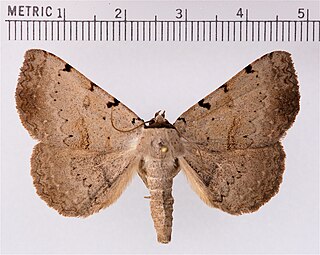
The Catocalini are a tribe of moths in the family Erebidae. Adults of many species in the tribe are called underwing moths due to their vividly colored hindwings that are often covered by contrastingly dark, drab forewings.
Aspères is a commune in the Gard department in southern France.

Hydrangea aspera is a species of flowering plant in the family Hydrangeaceae native to dense forests in the region between the Himalayas, across southern China, to Taiwan. It is a large, erect deciduous shrub growing to 3 m (10 ft) tall and wide, with broadly oval leaves and dense branches. The flowers are typically borne in large flat heads in late summer, and are in variable shades of pale blue and pink, fringed by white or pale pink sterile florets.

Rhinoclavis is a genus of sea snails, marine gastropod molluscs in the family Cerithiidae, the ceriths.

Tachosa is a genus of moths of the family Erebidae. The species of this genus are found in Africa.
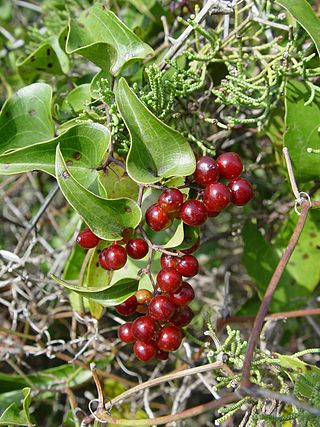
Smilax aspera, with common names common smilax, rough bindweed, sarsaparille, and Mediterranean smilax, is a species of flowering vine in the greenbriar family.

Aphananthe aspera, commonly known as scabrous aphananthe or muku tree, is a flowering plant in the family Cannabaceae. It is found on slopes and stream banks between 100 and 1600 m. It is native to China, Taiwan, Japan, Korea, and Vietnam.
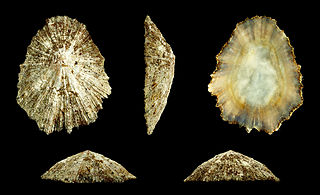
Patella aspera is a species of limpet, a type of sea snail in the family Patellidae. Long considered to be a subspecies of Patella ulyssiponensis, genetic evidence supports its recognition as a separate species. It is native to Macaronesia. It is known by the common name Azorean limpet, and its local name is lapa brava.

Diodora aspera, also known as the rough keyhole limpet, is a species of sea snail, a marine gastropod mollusk in the family Fissurellidae, the keyhole limpets. Although similar in appearance to a common limpet, it has a hole near the apex of its shell, and is only distantly related. It often has a scaled polychaete worm Arctonoe vittata living inside its shell as a commensal. In the event that it is attacked by a starfish, it extends flaps of mantle to defend itself, and the worm also helps drive the predator away.
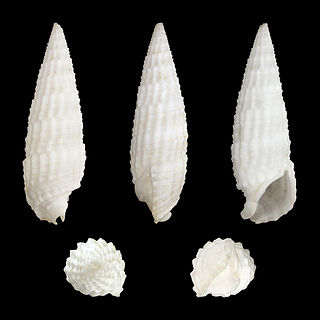
Rhinoclavis aspera is a species of sea snail, a marine gastropod mollusk in the family Cerithiidae.

Ectopatria aspera is a moth of the family Noctuidae. It is found in New South Wales, South Australia, Victoria, Western Australia and New Zealand. It is considered a migratory species. The holotype specimen of the now synonymised Xylina saxatilis is held at Museums Victoria.

Achyranthes aspera is a species of plant in the family Amaranthaceae. It is distributed throughout the tropical world. It can be found in many places growing as an introduced species and a common weed. It is an invasive species in some areas, including many Pacific Islands environments.

Hibbertia aspera, commonly known as rough guinea flower, is a species of flowering plant in the family Dilleniaceae and is endemic to eastern Australia. It is an ascending or erect shrub with low-lying or scrambling branches, oblong to lance-shaped or egg-shaped leaves with the narrower end towards the base, and yellow flowers with four to six stamens in a single group, joined at the base.
Cyclophora aspera is a moth in the family Geometridae. It is found in Colombia.

Tachosa acronyctoides is a moth of the family Erebidae.
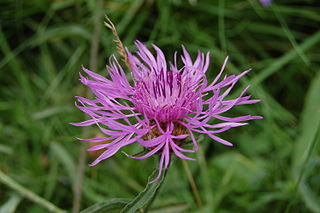
Centaurea aspera, the rough star-thistle, is a species of Centaurea found in Europe and in New York, United States.
Tachosa fumata is a moth of the family Erebidae first described by Hans Daniel Johan Wallengren in 1860. It is found in Angola, Burkina Faso, the Democratic Republic of the Congo, Ethiopia, Kenya, Mauritania, Namibia, South Africa, Tanzania, Uganda and Zimbabwe.
Tachosa guichardi is a moth of the family Erebidae. It is found in Ethiopia, Kenya, Nigeria, Saudi Arabia, Tanzania and Yemen.
Tachosa sagittalis is a moth of the family Erebidae. It is found in Ethiopia, Kenya, Sudan, Tanzania and Uganda.













